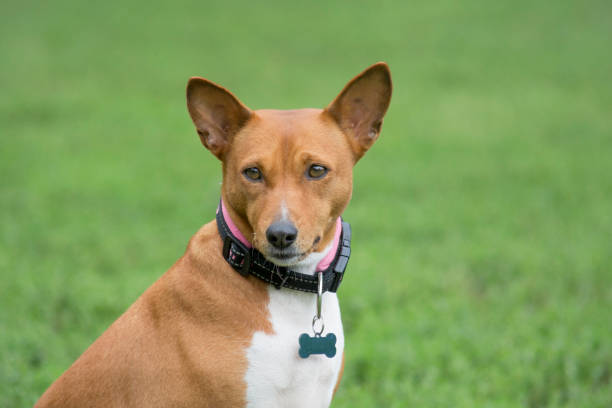When it comes to dog breeds, the Basenji is truly one of a kind. Known for their unique appearance and intriguing characteristics, Basenjis have captured the hearts of dog lovers around the world. Let’s dive into the fascinating world of these charismatic dogs and discover what makes them so special.
The Basenji, often referred to as the “barkless dog,” is a captivating and distinct breed that hails from Africa. With their intriguing history and exceptional characteristics, Basenjis stand out in the world of canines. In this article, we’ll delve into the visual traits that define the Basenji’s appearance, helping you gain a deeper understanding of this remarkable breed’s look.
1. Historical origin
Basenji’s ancestors can be traced back to the ancient Egyptian era, and there are a large number of carvings similar to Basenji dogs in many pharaoh tombs. About 100 years ago, Westerners discovered this breed in central Africa and used it as a hunting dog. In the 1930s, Britain and the United States successfully introduced the breed for the first time, and later spread to other European countries.
2. Distinctive Features of a Basenji Dog
Size and Proportions: The Basenji falls within the medium-sized dog category. They have a well-balanced and compact body that showcases their athletic abilities. Despite their smaller stature, Basenjis exude strength and elegance.
Head and Facial Features: One of the most striking aspects of the Basenji’s appearance is their head. They possess a finely chiseled skull and a distinctive forehead wrinkle. Their almond-shaped eyes are dark and intelligent, radiating a curious and alert expression.
Ears: Basenjis are known for their pointed, erect ears that stand tall on the sides of their head. Their ears contribute to their keen sense of hearing, which is essential for their hunting heritage.
Tail: The Basenji’s tail is set high and curls tightly over their back. This unique tail carriage is a characteristic feature that sets them apart from other breeds.
Coat: Basenjis have a short and fine coat that lies close to their body. Their coat comes in a variety of colors, including red, black, tricolor, and brindle. One notable feature is their sleek and clean appearance, making them relatively low-maintenance in the grooming department.
Wrinkled Forehead: Basenjis are known for the wrinkles on their forehead, which give them a quizzical and curious expression. These wrinkles are a distinctive feature of the breed and add to their unique charm.
3. Personality traits
The Basenji is an easy-going, fun-loving breed that makes it a very popular family dog. Smart and independent, sharp and vigilant, treats people with affection and love, is very dependent on those he trusts, and has reservations about strangers.
It is worth mentioning that the most famous feature of Basenji dogs is that they seldom bark, and sometimes people mistake them for “dumb”. Because they don’t bark to disturb the people, they are called “dumb dogs”. This non-barking dog is perfect for apartment keeping and makes a good companion and pet dog.
Secondly, it is a “cleanliness” dog. They not only wash their faces like cats, keep their bodies neat and clean, but also often “urge” their owners to clean up the room!
In addition, probably because of their “cleanliness”, they don’t like rain. Usually they are energetic and happy to go out for activities, but as long as it is raining, they will feel anxious and just want to retreat home and hide in a warm and dry corner.
4. Feeding attention
The head and neck of the Basenji are wrinkled and easy to hide bacteria. The owner should pay attention to frequent combing and keeping it clean. Especially in summer, they need to be cleaned and cared for more to keep them clean and healthy.
Basenji dogs are prone to obesity. Most of them belong to the type that eats as much as you give, and finds for yourself when you give less. Therefore, in addition to needing a lot of exercise on weekdays, Basenji dogs also need their owners to control their diet to prevent their bodies from getting fat and becoming obese. Slow and lazy, losing the characteristics of quickness and agility.
It is worth mentioning that the estrus period of most dog breeds is twice a year, while the estrus period of the Basenji breed is only once a year, which is one of the reasons for the small number of Basenji dogs.
One question per article::Is a Basenji a good family dog?
Basenjis are affectionate toward their families, though they do best in a home with older children who know how to properly interact with pets. As long as your Basenji is socialized, trained early, and kept active, they make a very good family dog.
In Conclusion, the Basenji dog boasts a truly distinct appearance that combines elegant features, unique traits, and a heritage deeply rooted in their African origins. From their finely chiseled head to their tightly curled tail, Basenjis exude an aura of individuality and charm. Whether you’re drawn to their “barkless” vocalization or their wrinkle-adorned forehead, the Basenji’s appearance is sure to capture your heart and leave a lasting impression.


